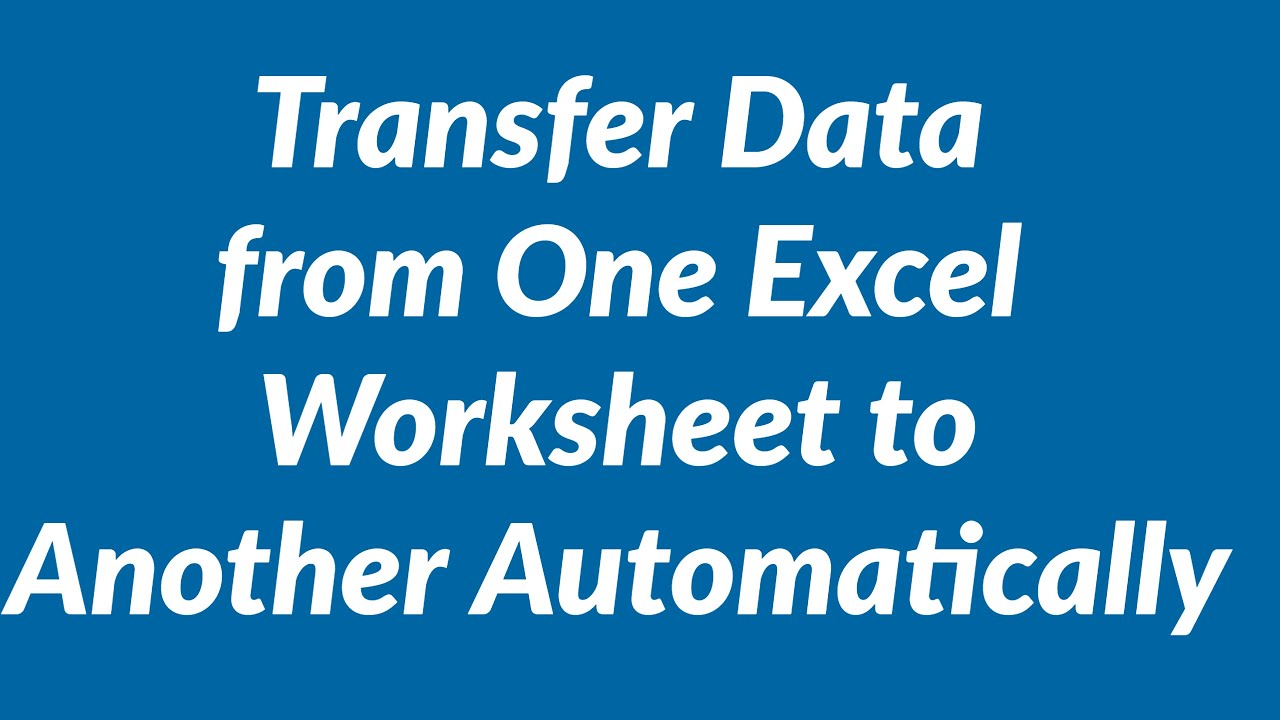5 Ways to Automatically Import Excel Data to Google Sheets

In today's fast-paced digital environment, data integration between different software platforms is crucial for maintaining workflow efficiency. One common need among businesses and individuals is the ability to seamlessly transfer Excel data into Google Sheets. This guide explores five effective methods to achieve this, ensuring that your data synchronization remains hassle-free and automated.
1. Using Google Sheets' Built-In Import Functions

Google Sheets offers several built-in functions that can import data from Excel files directly:
- IMPORTRANGE: This function allows you to import data from one Google Sheets document to another. However, to use it with Excel files, you need to upload your Excel file to Google Drive first, converting it to a Google Sheets format.
- Importing CSV Files: If you save your Excel file as a CSV, you can use the
IMPORTDATAfunction to directly pull in the CSV data into your Google Sheet.
📝 Note: Converting an Excel file to Google Sheets format is automatic when you upload the file to Google Drive and open it with Google Sheets.
2. Google Drive Sync Tool

Google Drive provides a Sync tool for your computer, which automatically syncs files between your local drive and Google Drive:
- Install the Google Drive app on your computer.
- Place your Excel file in the designated Google Drive folder.
- Open the file with Google Sheets to convert it automatically.
- Set up periodic synchronization to ensure any updates are reflected.
🔄 Note: Ensure that the Excel file is in a folder that's set to synchronize with Google Drive.
3. Utilizing Add-Ons for Automation

There are several add-ons available in the Google Workspace Marketplace that can automate the import process:
- Excel to Sheets: This add-on directly imports Excel files into Google Sheets.
- CellAUTO: This tool provides automation for various data operations including imports from Excel.
💡 Note: Remember to enable API access for add-ons to function correctly within Google Sheets.
4. Scripting with Google Apps Script

For those comfortable with coding, Google Apps Script offers a way to automate data import with custom scripts:
- Open your Google Sheet and select "Tools" > "Script editor."
- Write a function that uses the
DriveApporSpreadsheetAppservices to read and import Excel data. - Set up triggers to run this script periodically or upon specific events.
Here's a basic example:
function importExcelData() {
var file = DriveApp.getFileById("YOUR_EXCEL_FILE_ID");
var blob = file.getBlob().getAs('application/vnd.openxmlformats-officedocument.spreadsheetml.sheet');
var ss = SpreadsheetApp.open(blob);
var sheet = ss.getSheets()[0];
var dataRange = sheet.getDataRange();
var values = dataRange.getValues();
// Here you would paste the data into your Google Sheet
// ...
}
💻 Note: Knowledge of JavaScript is required for scripting with Google Apps Script.
5. API Integration

Using APIs, you can automate data transfer from Excel to Google Sheets with a more complex setup:
- Use the Google Sheets API to create a script or application that interfaces with both Excel and Google Sheets.
- Set up an authentication method using OAuth or API keys.
- Schedule periodic pulls or pushes of data using tools like cron jobs or Azure Functions.
Here's a high-level overview of the process:
| Step | Description |
|---|---|
| 1 | Export Excel data using an API or via a server-side script. |
| 2 | Use Google Sheets API to upload or update data in real-time or scheduled intervals. |
| 3 | Implement error handling and logging for data integrity. |

⚙️ Note: This method requires more technical setup but provides the most flexible integration options.
In summary, the ability to automatically import data from Excel into Google Sheets can significantly streamline your workflow. From utilizing Google's built-in functions to complex API integrations, there are multiple ways to ensure your data is always up-to-date and accessible in your preferred platform. Each method has its own merits, depending on your technical expertise, the complexity of your data, and the desired level of automation. Whether you opt for add-ons, scripting, or direct API integration, the key is to find a solution that integrates seamlessly into your daily operations, reducing manual tasks and enhancing productivity.
Can I automatically update my Google Sheets when changes are made to an Excel file?

+
Yes, with some methods like scripting or API integration, you can set up triggers to import data periodically or when specific events occur, such as file changes.
What are the limitations when using add-ons to import Excel data?

+
Add-ons might have limitations on file size, the number of sheets they can handle, or specific formats they support. Always check the documentation of the add-on for detailed limitations.
Is there a cost associated with these methods?

+
Most methods are free with a Google account; however, some add-ons might require payment for advanced features or integrations. Also, API usage might incur charges depending on the volume of API calls and the service used.
How can I ensure data security during import?

+
Use OAuth for authentication when setting up scripts or API integrations. Google Drive Sync Tool encrypts data during transfer. Keep your scripts and API keys secure, and limit access to sensitive data.



